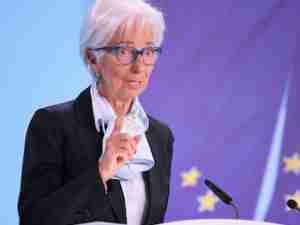Exports may be on a roll, but the relative dollar value of inbound vs. outbound goods continues to skew in favor of imports, port executives said. Outgoing goods include low-value raw materials headed to Asia, many of which return to US shores as pricier consumer goods, like electronics, clothing and toys.
The oil import bill should once again subtract from the overall trade deficit in October amid sliding petroleum prices and falling inbound volume, according to John Felmy, chief economist at the American Petroleum Institute, a trade association for the oil and gas industry. The dollar value of crude and oil-product imports skidded an estimated 13.2% from September to October, he said. The petroleum import bill could ease 6.3% from October to November, according to Felmy's preliminary calculations.
At the nation's largest container port, Los Angeles, outbound cargo climbed nearly six percent in October from September, "probably due to the continuing weakness of the US dollar," said port spokeswoman Theresa Adams Lopez.
Inbound goods to L.A. slowed three percent, however, during the "shoulder period" of the peak season, she said. "The high season shipping is winding down."
L.A.'s exports amounted to about 24% of its total containerized volume in October, according to the port's data.
Across the harbor complex, Long Beach saw increased activity in both directions in October, supported by strong underlying fundamentals like economic growth and the manufacturing stampede to Asia, according to port spokesman Art Wong.
"Importers are demonstrating a lot of confidence in the economy," Wong said. These importing retailers expected a bustling holiday shopping season even before the recent oil-price tumble, when shipping orders for October cargo were placed, he noted.
On the outbound side, Asian manufacturers need American raw materials to produce the finished goods that US markets absorb so energetically, he said. The soggy dollar aids exports by keeping them attractively priced, he said.
Containerized imports to Long Beach rose almost six percent in October from
September, and exports jumped nearly 11%. Inbound volume to the southern
California port in October was roughly triple the outbound volume, but that gap may narrow some over the long term as China's consuming middle class expands, Wong said.
The relative value of incoming and outgoing cargo is also mismatched, he said.
"It took a long time for this trade gap to widen as much as it has, so it's going to take a sustained period of export growth and changes in currency rates for more high-value product manufacturing to come back into this country," Wong said.
Total October traffic at the southern California ports was up about five percent from a year ago, as area docks see the return of cargo that had been diverted in the aftermath of severe port congestion during 2004's peak season, said Capt. Manny Aschemeyer, executive director of the Marine Exchange of Southern California, which tracks vessel movements at four ports.
Cargo moved smoothly throughout this year at the region's ports, Aschemeyer said. But while capacity appears to be sufficient to handle greater volume next year, some infrastructure problems may materialize in the medium term. Bridges, highways, rail access and off-dock facilities must be improved to handle steadily rising activity at L.A. and Long Beach, or gridlock could appear by 2010, he said.
Further up the coast, in Oakland, exports swelled 17% in October vs. September, while imports shrank nearly three percent, according to port statistics.
In Oregon, exports from Portland's harbor fell more than seven percent in October, but imports increased almost 11%, port data show.
Seattle's docks registered gains in both directions in October f




